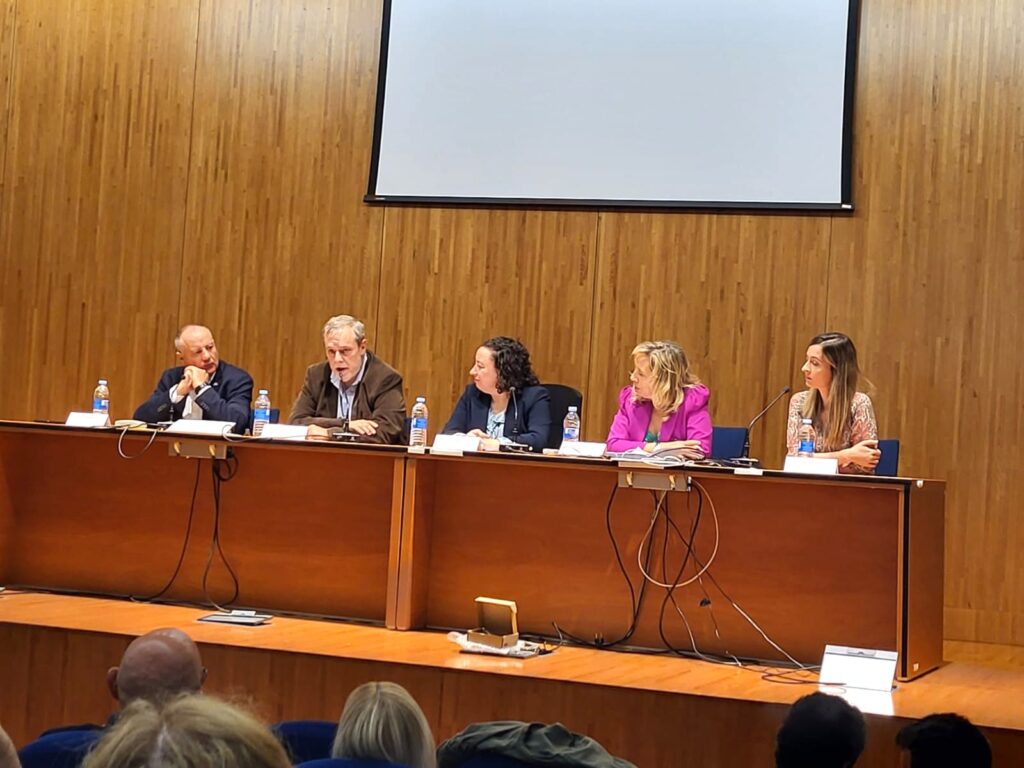 The first Geothermal Energy Conference of the Geothermal Research and Innovation Network for Portugal and Spain (source: University of Oviedo via LinkedIn)
The first Geothermal Energy Conference of the Geothermal Research and Innovation Network for Portugal and Spain (source: University of Oviedo via LinkedIn)The Mieres Campus is a particularly apt location for the conference, given the history of geothermal heating in the campus since 2014. This was enabled by the work undertaken by Hunosa to connect the heat network to mine water supply from the Barredo well annex. Ángel Martín, Director of the Mieres Polytechnic School, pointed out that the development of renewable energies is “in the DNA of this campus.” There are plans now to install photovoltaic panels at the university to complement the heating and hot water supplied by geothermal.
Also in attendance were Gregorio Rabanal, President of Hunosa, Begoña Cueto, Vice-Rector for Transfer and Business Relations of the University of Oviedo, Miny Diaz Aguado, Director General of Energy and Mining of the Government of Asturias, and Javier Urchueguía, professor at the Polytechnic University of Valencia and president of the European Geothermal Panel.
EU supports geothermal development
Urchueguía emphasized that the European Union continues to firmly support the development of geothermal energy. He said that there are currently 2.2 million heat pumps in the EU and that there are now efforts to explore the possibility of reaching 10 million heat pumps by 2023. This is an ambitious and complex challenge, he admits, and that “the figure could be reached, but the current market does not allow it.”
“Spain is a powerhouse in research and development within this field. We have made great progress in analyzing, for example, the potential of geothermal energy, the conductivity of the soil or the development of new materials,” Urchueguía continued. However, geothermal development in Spain has been curtailed by complex conditions, creating a bottleneck caused by lack of support and an adequate legislative framework.
Gregorio Rabanal stressed that the Mieres heat network is the best in Spain and that it is one of more than 500 heat networks currently operating in the country. The Mieres heat network extracts heat from mine water using a submersible pump. Water at 23 °C passes through heat pumps, increasing the temperature to 80 °C for the Mieres Campus and 65 °C for La Mayacina. The heat network serves the main building on campus, the IES Bernaldo de Quirós, the Álvarez Buylla Hospital, the Asturian Energy Foundation and 248 apartments in La Mayacina.